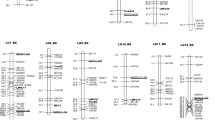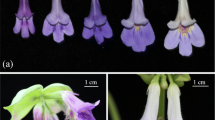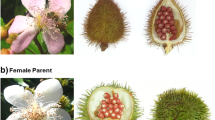Abstract
An integrated genetic map of the dioecious species Asparagus officinalis L. has been constructed on the basis of RFLP, RAPD, AFLP and isoenzyme markers. The segregation analysis of the polymorphic markers was carried out on the progeny of five different crosses between male and female doubled-haploid clones generated by anther culture. A total of 274 markers have been organized to ten linkage groups spanning 721.4 cM. Since the haploid chromosome number of asparagus is ten, the established linkage groups probably represent the different chromosomes; however, the only group associated with a specific chromosome is the one which includes sex, whose determinant genes have been located on chromosome 5. A total of 33 molecular markers (13 RFLPs, 18 AFLPs, 2 RAPDs and 1 isoenzyme) have been located on this chromosome. The closest marker to the sex determinant is the AFLP SV marker at 3.2 cM.
Similar content being viewed by others
Author information
Authors and Affiliations
Additional information
Received: 26 March 1998 / Accepted: 30 April 1998
Rights and permissions
About this article
Cite this article
Spada, A., Caporali, E., Marziani, G. et al. A genetic map of Asparagus officinalis based on integrated RFLP, RAPD and AFLP molecular markers. Theor Appl Genet 97, 1083–1089 (1998). https://doi.org/10.1007/s001220050995
Issue Date:
DOI: https://doi.org/10.1007/s001220050995




